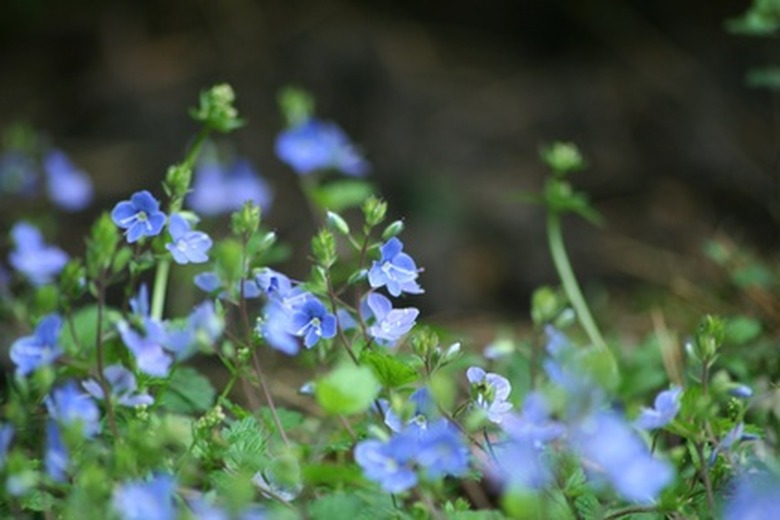Weeds With Blue Flowers In The UK
The UK is home to a large number of weeds with blue or bluish/purple flowers. Thankfully, many database resources now include color photos of both foliage and flowers. To aid in identification, note the shape of the leaves and any unusual features of the plant. The time of year of flowering, the height of the plant and even the location in which you found it can all help you to discover the identity of your yard or garden invader.
Bush Vetch
Bush Vetch or Vicia sepium is a relative of the pea, with the same ability to reach and grab on to nearby objects as it grows. Some homeowners choose this perennial for their wildflower gardens. It blooms from June to August, offering flowers that look similar to those of the sweet pea. Because it spreads through both seeds and its root system, it can be tough to clear completely from its chosen location. Down Garden Services recommends glyphosate treatment for this invader.
- The UK is home to a large number of weeds with blue or bluish/purple flowers.
- Bush Vetch or Vicia sepium is a relative of the pea, with the same ability to reach and grab on to nearby objects as it grows.
Forget-me-not
True Forget-me-not or Myosotis scorpioides is a perennial evergreen, sometimes appreciated for its flowers. The annual version, Common or Field Forget-me-not, or Myosotis arvensis, usually has flowers too small to appeal to passersby. These appear from April to October. The common version likes dry soil and spots where other plants struggle to grow. The plant can sometimes be identified through its hairy, blue-tinged leaves. Down Garden Services recommends pulling and composting the plant or applying a treatment of Paraquat or Diquat to eliminate it.
Germander Speedwell
Germander Speedwell or Veronica chamaedrys is a very common plant that creates blue flowers with a white center. Germander Speedwell has kidney-shaped, hairy leaves with serrated edges. The perennial flowers from April to July. The flowers contain four petals. The plant is difficult to contain because it tolerates most soils, spreads by runners and can regenerate from underground. It also can germinate in both spring and fall, spread through flowers or seed and produce over multiple seasons. Speedwell can be hand-weeded or chemically treated with a fluroxypyr and clopyralid herbicide, but homeowners must often repeat the process to get all of the plants.
- True Forget-me-not or Myosotis scorpioides is a perennial evergreen, sometimes appreciated for its flowers.
- The plant is difficult to contain because it tolerates most soils, spreads by runners and can regenerate from underground.
Slender Speedwell
Slender Speedwell or Veronica filiformis is a bigger troublemaker because it can be spread by mowing. If it occurs in an area where the ground will be moved or disturbed or mowing is planned, it is best to remove the plant by hand. Discard any clippings that may contain pieces of the root or stem after mowing. The plant can also be treated with Paraquat or Diquat. Slender Speedwell flowers from March to June.
